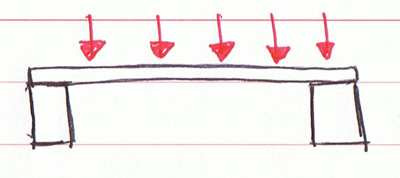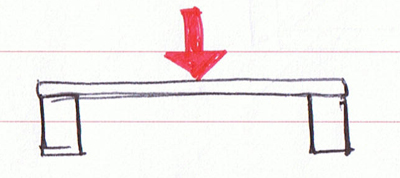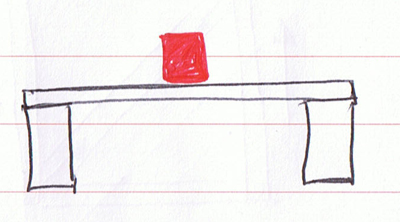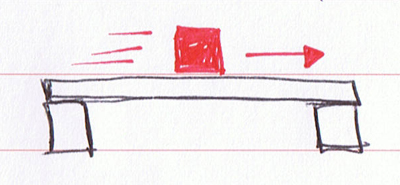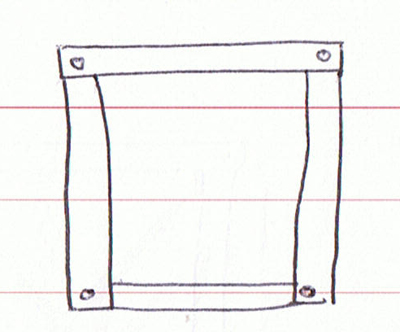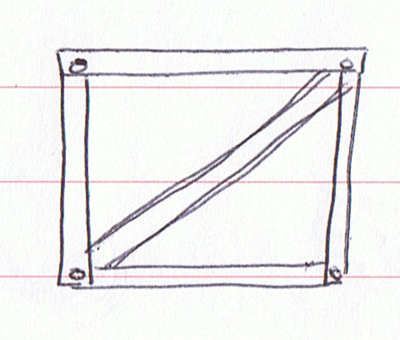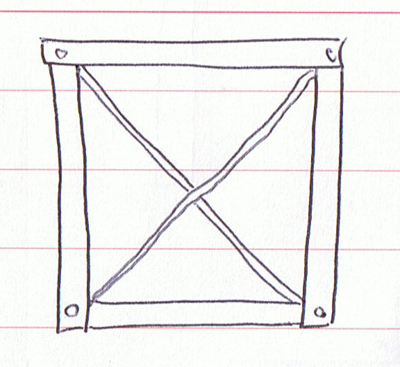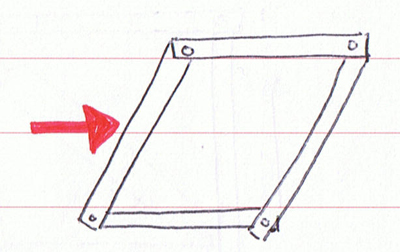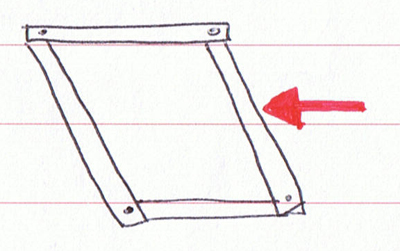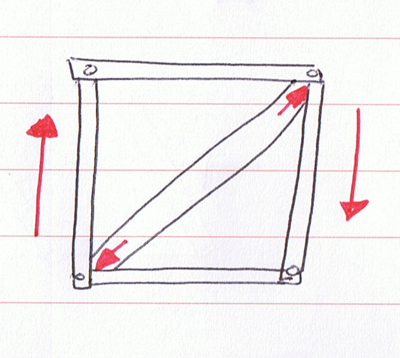So now I know the structure and forced involved… what about the application of those forces?
Distributed - This is also known as a UDL (universally distributed load), it’s simply a load that it distributed along a surface.
Concentrated – A load that is gathered on a point.
Static - A load that does not move.
Dynamic – A moving load.
Simples ![]()
So, a distributed load as opposed to a concentrated load:

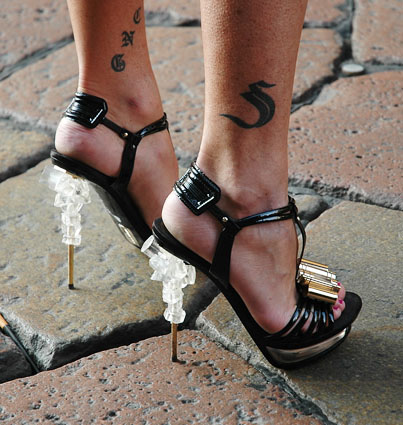 And a static load as opposed to a dynamic load:
And a static load as opposed to a dynamic load:
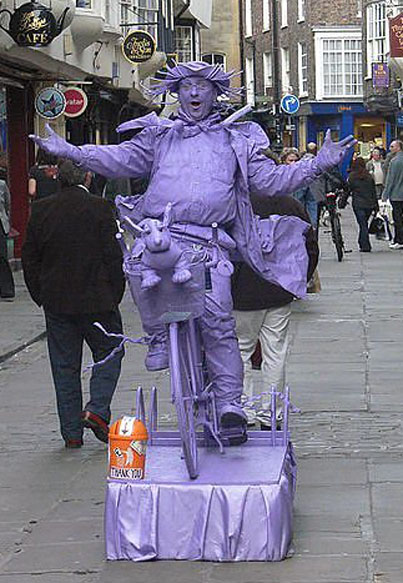
 So when designing a structure it is important to keep in mind the nature of its use, is it a bridge that will be subject to dynamic loads or a table that will be subject to static loads?
So when designing a structure it is important to keep in mind the nature of its use, is it a bridge that will be subject to dynamic loads or a table that will be subject to static loads?
One way to make sure that your structure can take a load is by reinforcing it using…
Triangulation!
Take this square:
It’s attached at all 4 corners using a pivot so if you push it in any direction it will deform, not a vary strong structure then.
If you add another member…
…all of a sudden you have reinforced the structure to reduce it’s tendency to deform. the material you use for this new member is important, if it is good under compression and tension you can make your square using just one, if it isn’t you’ll need to use two:
String is good under tension but no good under compression, you need the second member to completely stabilise the square.
You can easily tell what force is acting on your member by looking at the forces acting on the square:
This member is under tension. These are referred to as ties and the forces acting on them are represented by the arrows on either end facing inwards, this shows the internal forces at work within the tie.
This member is under compression. These are referred to as struts and the forces acting on them are represented by the arrows on either end facing outwards, this shows the internal forces at work within the strut.
